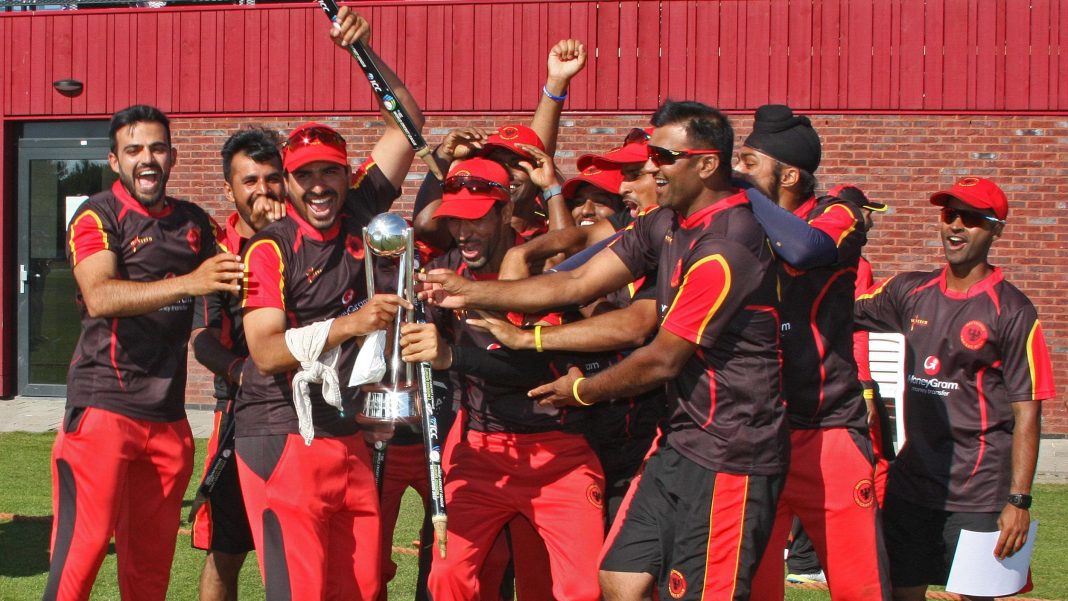If you were to place a bet on which country would be the leading cricket nation in Europe in ten years’ time, it might be worth having a punt on Germany.
The game has seen enormous growth in recent years, with the German Cricket Federation (DCB) now comprising almost 150 clubs across its seven regions, and its five-year strategy, released this week in both German and English, leaves no doubt that this is seen as a platform for an ambitious expansion programme.
The document founds its thinking upon four ‘DCB Values’: Integrity, Inclusivity, Excellence and Teamwork.
As in many other European countries cricket’s strength in Germany depends very largely on immigrant communities, fuelled in recent years by the government’s positive approach to refugees and other migrants, and it is therefore significant that the strategy’s first focus area is ‘integration into the German sports landscape.’
Targets here are for four-fifths of the Federation’s member-clubs to be affiliated to their city sports federation and for the regions to be similarly integrated in at least ten states, for the DCB to achieve full membership of the German Olympic Committee, and for qualifications for cricket’s coaches and officials to be recognised by Germany’s sporting administration.
This may all sound a bit bureaucratic, but in a highly organised sports environment like Germany’s they are fundamental to the game’s full acceptance as part of the sporting scene.
Such formal considerations, while important, form nevertheless only a small part of the DCB’s strategy.
It also aims at big increases in playing numbers across all aspects of the game: to have 15,000 people ‘regularly participating in cricket in Germany’, with active introductory, social cricket and softball cricket competitions and significant growth in the women’s game, which has been one of Germany’s success stories in recent years.
The strategy aims for 32 women’s teams by 2025, with a minimum of four teams in each region, additional female players in regular indoor and softball cricket, twelve girls’ hard ball teams, and pools of at least 50 active female coaches (25 of them at Level 2) and 50 active female umpires.
Growth in umpires, scorers and coaches is, indeed, one of the hallmarks of the plan, which calls for an annual 10% increase in all three disciplines.
The long-term future of the game in Germany must involve a strengthening of youth cricket, and the DCB is aiming for an under-19 competition with at least four teams in each of its regions by 2025 and corresponding structures for at least one other age-group.
The strategy also envisages familiarisation programmes reaching 50,000 people a year, at least 20,000 of them schoolchildren taking part in the ICC’s Entry Level Programme.
At the other end of the pyramid, the ambition is for the Women’s and Men’s national teams to achieve T20I rankings of at least 15th and 20th respectively (they are currently 25th and 33rd), and for Germany to have both male and female Under-19 sides playing regular international matches and taking part in ICC tournaments.
Strikingly, the focus is not only upon T20: the strategy also aims at the Men’s side participating in the ICC 50-over Challenge League or its equivalent; Germany were relegated from Division 5 of the World Cricket League before its disbandment, so a place in the top 32 nations in this format would represent real progress as well as offering great opportunities for further development.
There is also a call for ‘established performance pathways for elite male, female and junior players offering them a minimum of 10 matches per season outside of international competition.’
This goal implicitly points to what is at once the great strength and the great challenge of the DCB’s situation managing an amateur sport: the fact that it is necessarily split into a number of regional organisations.
The travelling distances are, by European standards, considerable: it’s 476 km. by road from Hamburg to Dresden, 614 km. from Düsseldorf to Munich, and 724 km. from Berlin to Saarbrücken.
Organisationally, too, the task of taking the necessary steps to achieve these national ambitions across seven regions will not be easily achieved.
But on the other hand, there are already national championships for both men and women, played off between the winners of the regional leagues, and there is plenty of scope for more representative cricket, regional teams providing the basis for those pathways which will, as the strategy acknowledges, be essential for the realisation of the DCB’s performance goals.
That, in turn, will call for more high performance coaches, a need which could potentially be met, at least in part, by the strategy’s aim of a 300% increase in sponsorship and partner income.
With live streaming of major national and international events, a massively enhanced social media profile and active promotional campaigns, the ambition is truly to put cricket on Germany’s sporting map.
Taking this bold drive from drawing board to reality will take concerted and consistent work at every level of German cricket, but it would be a brave gambler who bet against them pulling it off.
You’re reading Emerging Cricket — brought to you by a passionate group of volunteers with a vision for cricket to be a truly global sport, and a mission to inspire passion to grow the game.
Be sure to check out our homepage for all the latest news, please subscribe for regular updates, and follow EC on Twitter, Facebook, LinkedIn and YouTube.
Don’t know where to start? Check out our features list, country profiles, and subscribe to our podcast.
Support us from US$2 a month — and get exclusive benefits, by becoming an EC Patron.







